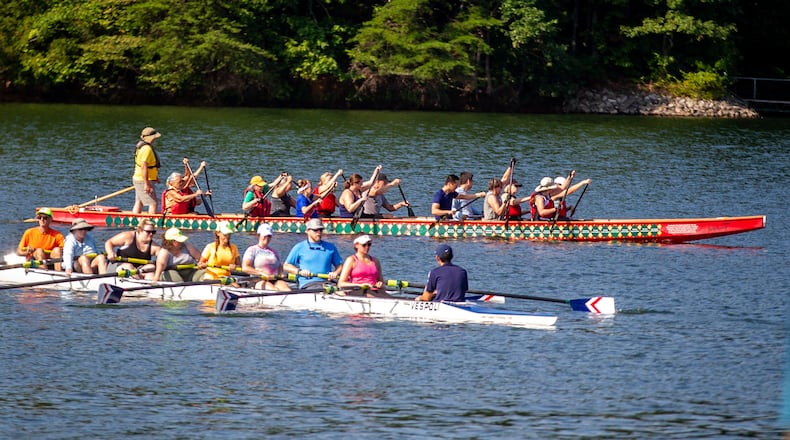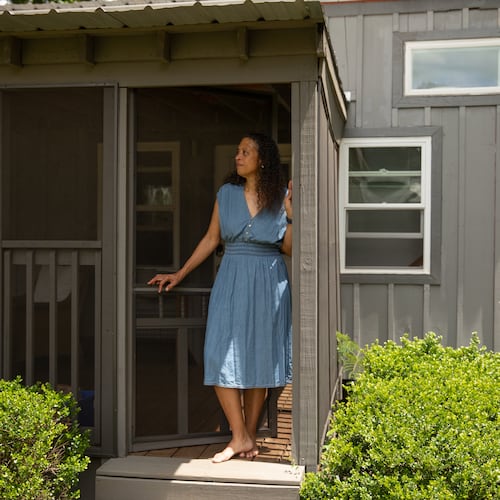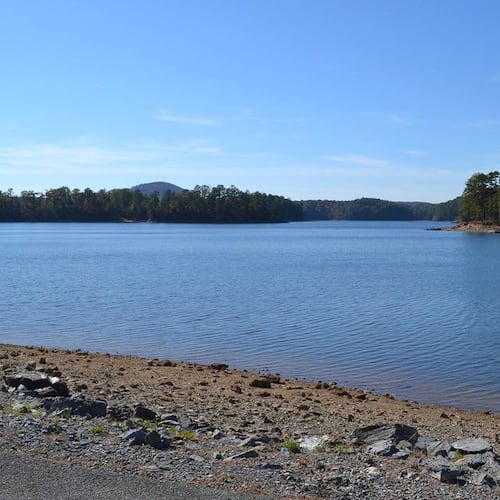When the international media alighted in Atlanta ahead of the 1996 Centennial Olympic Games, many weren’t impressed with the venues they saw.
“Never in American history has so much mundane architecture been thrown up in one place at one time — and on purpose,” the Baltimore Sun’s architecture critic sniped.
“This is not Barcelona,” began the Washington Post’s write-up.
That was kind of the point.
From the outset, Atlanta organizers didn’t have the billions in public financing that the Catalan capital did ahead of the previous summer Games. Georgia officials were instead largely reliant on what they could raise selling TV rights, souvenirs and sponsorships.
That kept the city’s architectural vision modest.
Organizers razed or painted some blighted properties within sight of Olympic venues. They used existing facilities, like the Georgia World Congress Center and Omni Coliseum. And where new venues were constructed, planners took into account how they would be used well after the Olympic cauldron was extinguished.
Credit: Renee Hannans
Credit: Renee Hannans
In the end, Atlanta, one of the last cities to privately finance its games, spent $3.8 billion in 2009 dollars to build venues and run the show, according to an Oxford University study. Barcelona had spent $11.4 billion. And many of the facilities constructed for the Atlanta Olympiad are still in use, unlike many venues in Athens, Rio de Janeiro and Beijing.
Some of the biggest winners from Atlanta’s Olympic building boom were local universities. Sporting facilities found new life as dorms, practice fields and game day venues. The old Olympic Village along the Downtown Connector, first used by Georgia State University as dormitories, then sold to Georgia Tech, helped GSU turn around its reputation as a commuter college, said Mike Dobbins, who managed the city’s Olympic legacy as commissioner of planning, development and neighborhood conservation and recently co-authored a book about the ‘96 Games.
Credit: LEITA COWART
Credit: LEITA COWART
But perhaps the biggest beneficiary was the Atlanta Braves. The team got its 30-year-old digs at Atlanta-Fulton County Stadium replaced with the state-of-the-art Olympic Stadium. The remodeled facility still stands and is used by GSU.
Here’s the status of some of the other venues used in the Atlanta ‘96 Games:
Still in use
Georgia International Horse Park: The Conyers facility hosted equestrian meets in 1996, as well as two events from the modern pentathlon. The park now includes a 173-acre nature preserve and stages horse shows, festivals, concerts and weddings. In the next two months, it has a barrel racing event and a 5K obstacle race on the calendar.
Credit: Curtis Compton
Credit: Curtis Compton
Lake Lanier: The reservoir has been around since the 1950s, but during the Games it was the site of rowing, canoe and kayaking events. The Gainesville-area Olympic venue was recently renovated to make it handicap accessible, and today it boasts a butterfly garden and rowing club.
Credit: Steve Schaefer
Credit: Steve Schaefer
Georgia Tech Aquatic Center: Built for the Games, the outdoor venue staged swimming, synchronized swimming, diving and water polo. The site was transferred afterward to Georgia Tech, which enclosed the facility. The venue is home to the school’s swimming and diving teams and is used for recreation by students.
Teetering or Transitioning
Stone Mountain Tennis Center: Since the Games, managers tried to lure major tennis events and concerts to the venue but were unsuccessful. The 26-acre, 8,000 seat site has been demolished. In December, Gwinnett County Commissioners agreed to negotiate with Fuqua Development to build a mixed-use center on the land.
Credit: Phil Skinner
Credit: Phil Skinner
Atlanta Beach: Constructed for beach volleyball, the Jonesboro facility has struggled to find its financial footing. A water park at the site closed in 2018 for renovations. Local officials are planning to add amenities such as a lazy river, board walk and food truck area.
Alonzo Herndon Stadium: Morris Brown University’s old stadium was overhauled into a 15,000-seat venue to host field hockey. For a time the college used the stadium for football games, but money woes led Morris Brown to sell off the stadium to pay debts after filing for bankruptcy. The stadium is now covered in graffiti and weeds.
Credit: John Bazemore
Credit: John Bazemore
Demolished
Atlanta-Fulton County Stadium, home of baseball events, and the Omni Coliseum, which hosted indoor volleyball matches, were both built prior to the Games and demolished in 1997. The Georgia Dome, which staged basketball, handball and gymnastics, was in use until demolished in 2017. A temporary velodrome was built at Stone Mountain during the Olympics to host track cycling, but it was sent to Quebec afterwards.
Credit: KEVIN KEISTER
Credit: KEVIN KEISTER
About the Author
Keep Reading
The Latest
Featured











